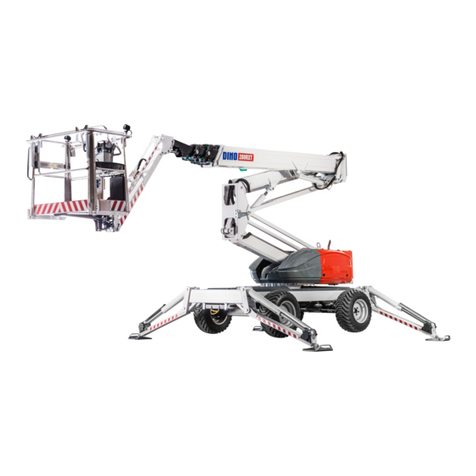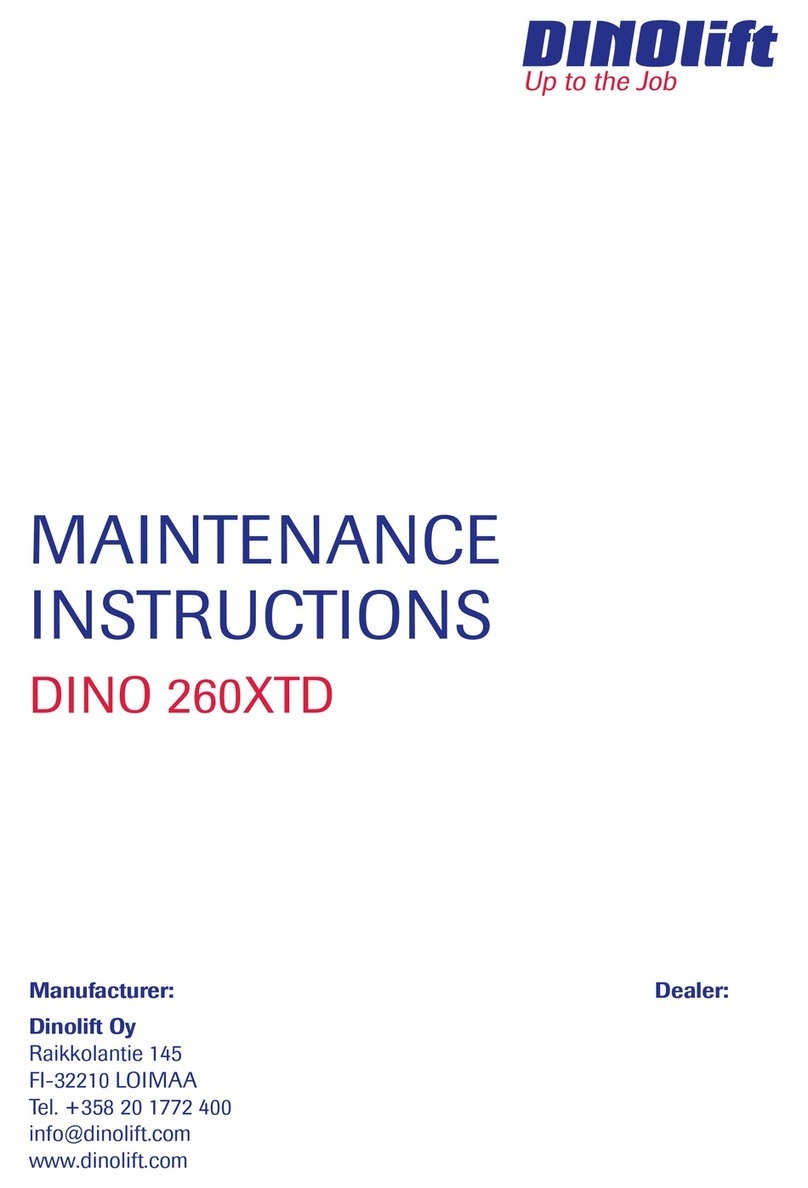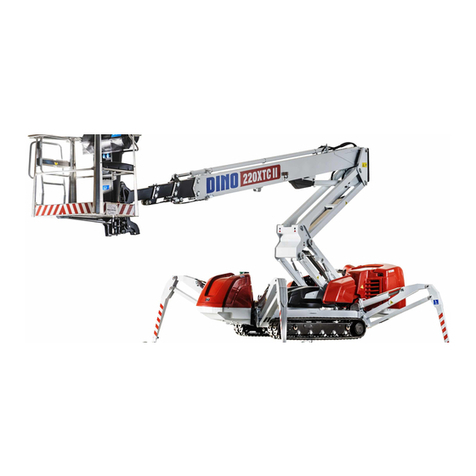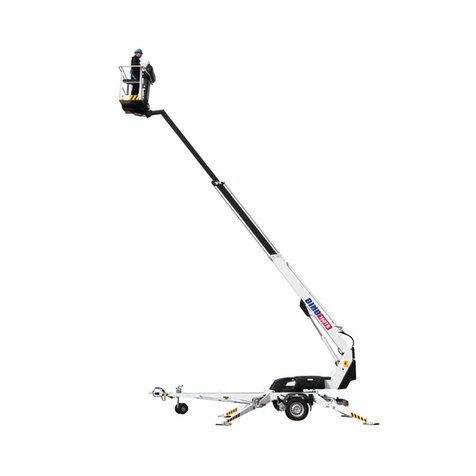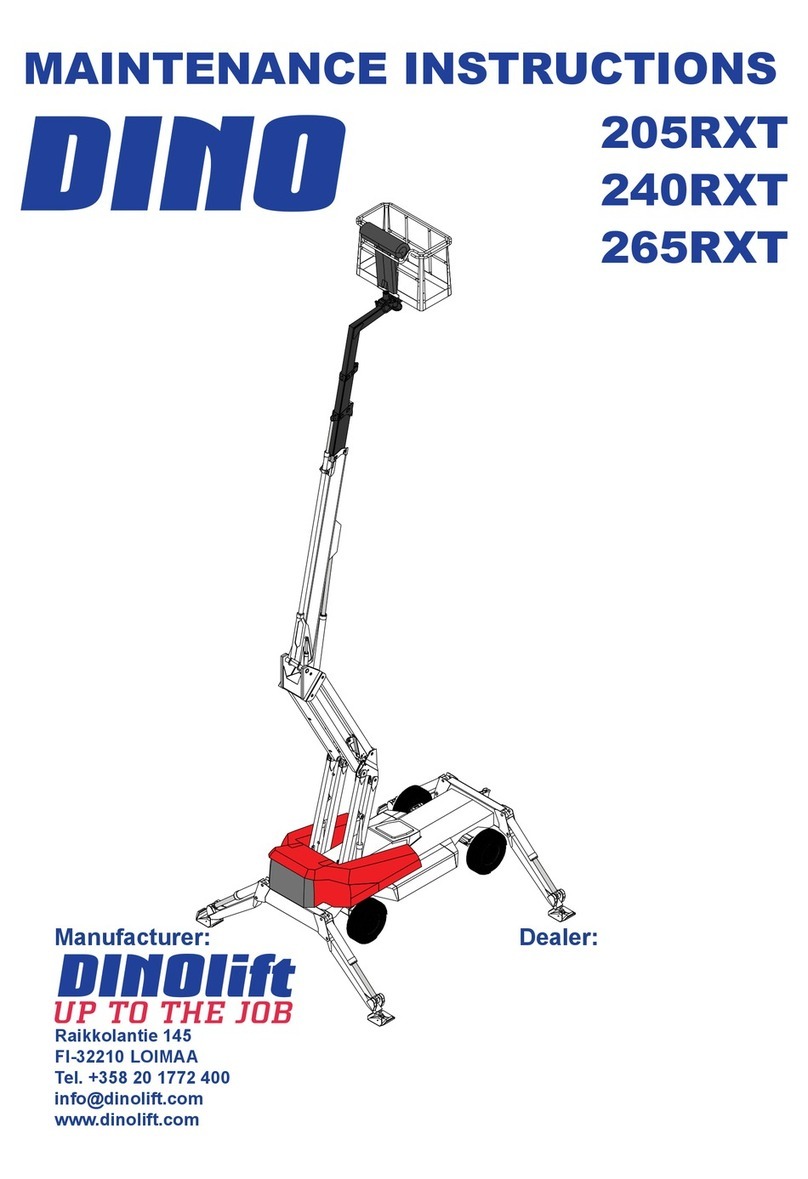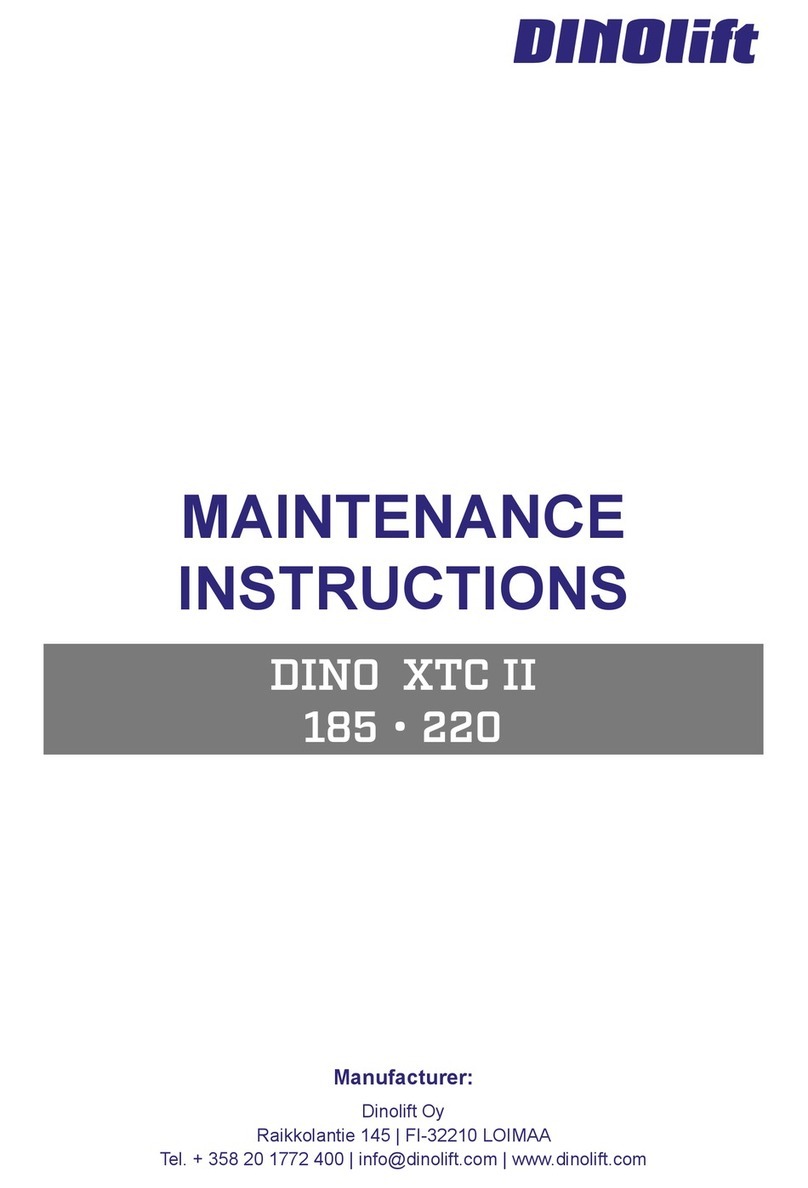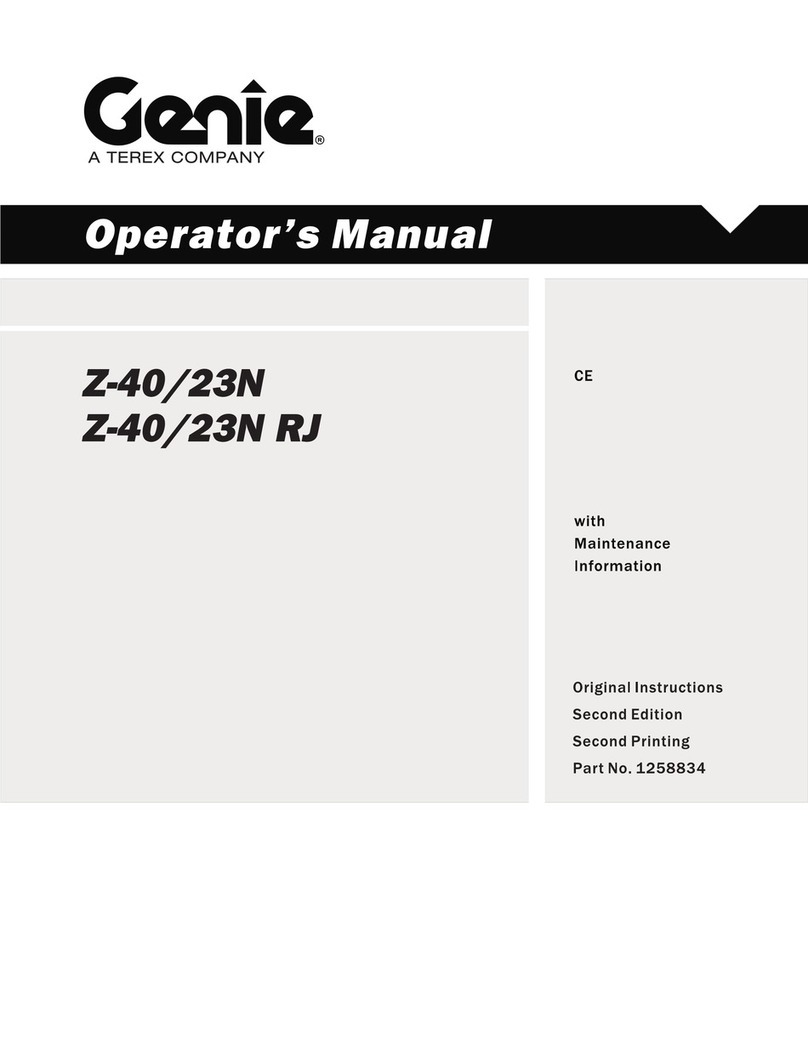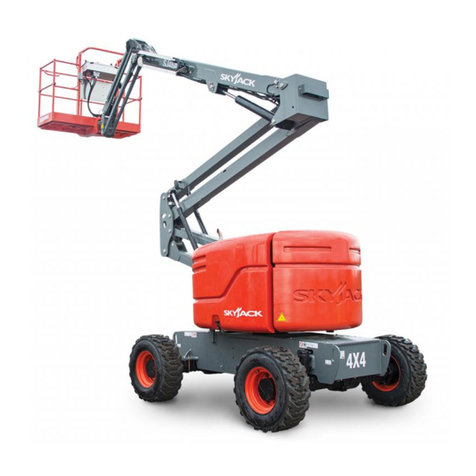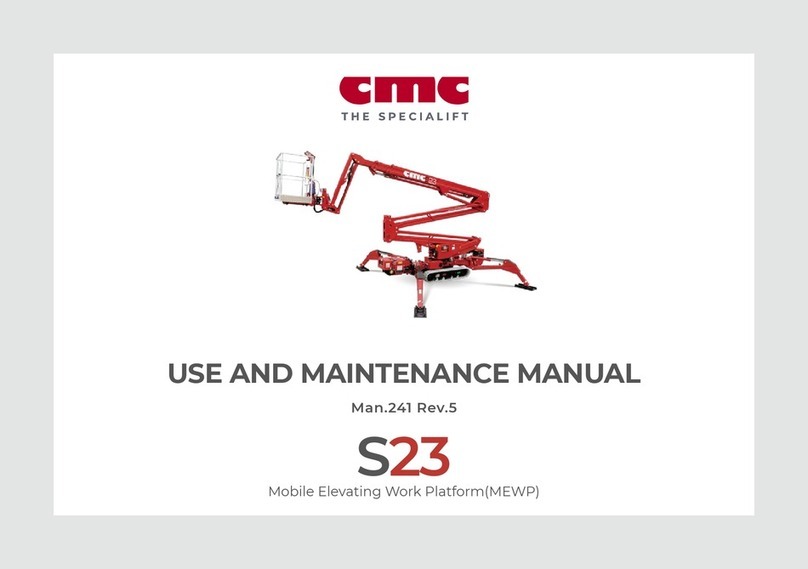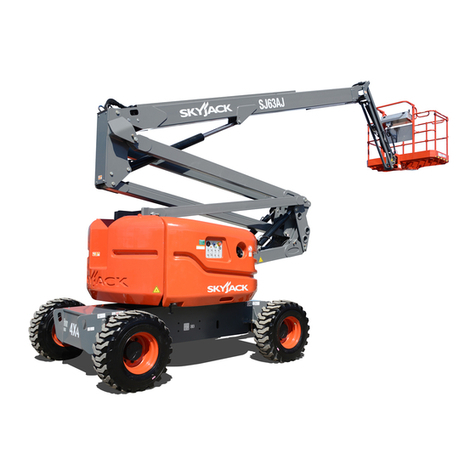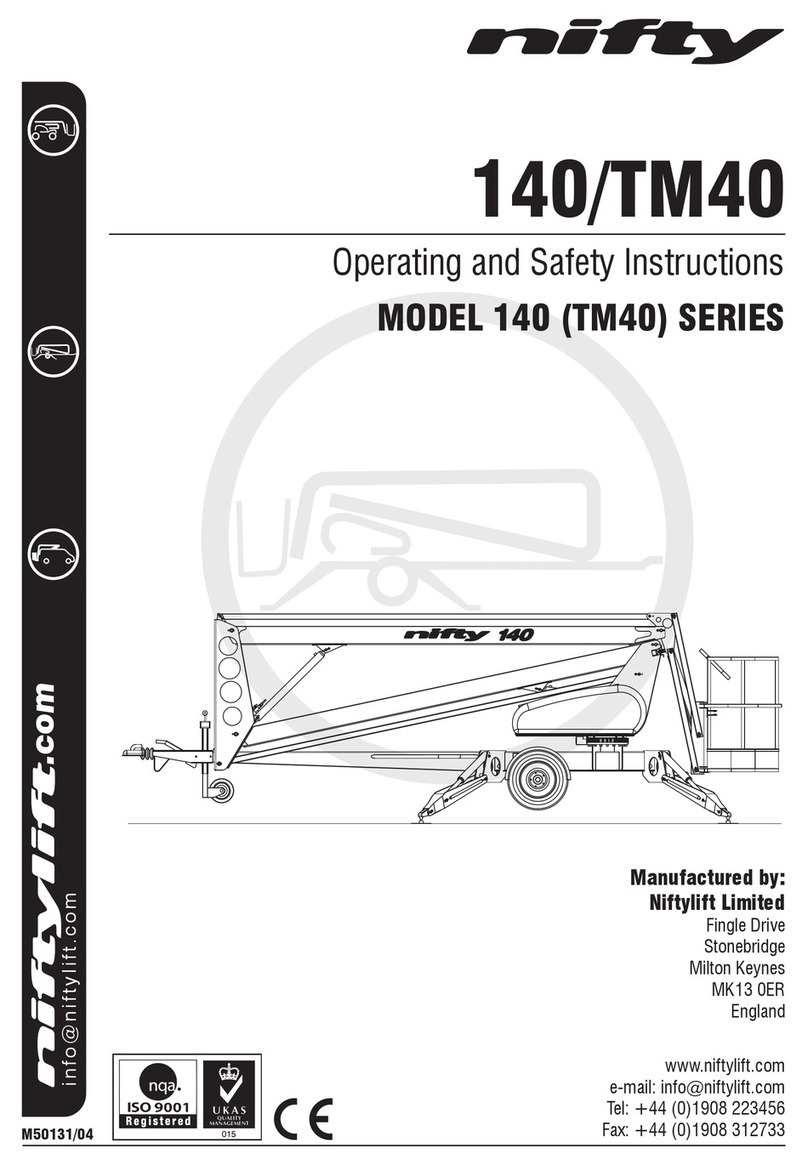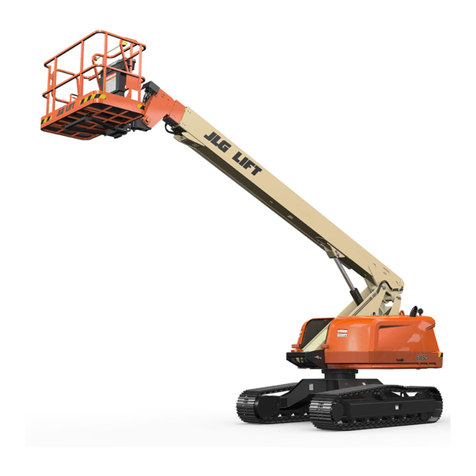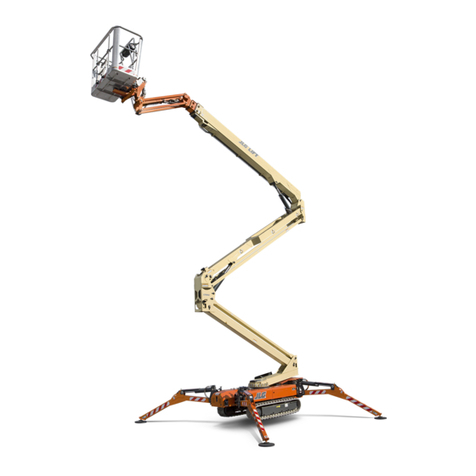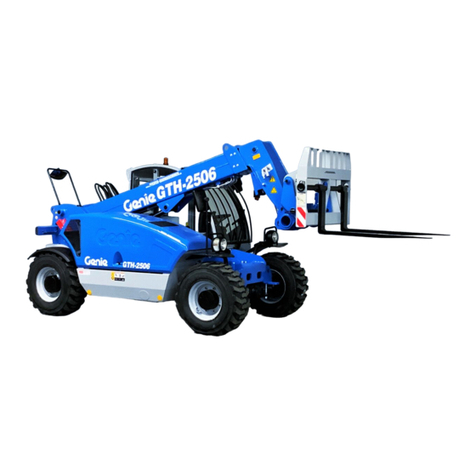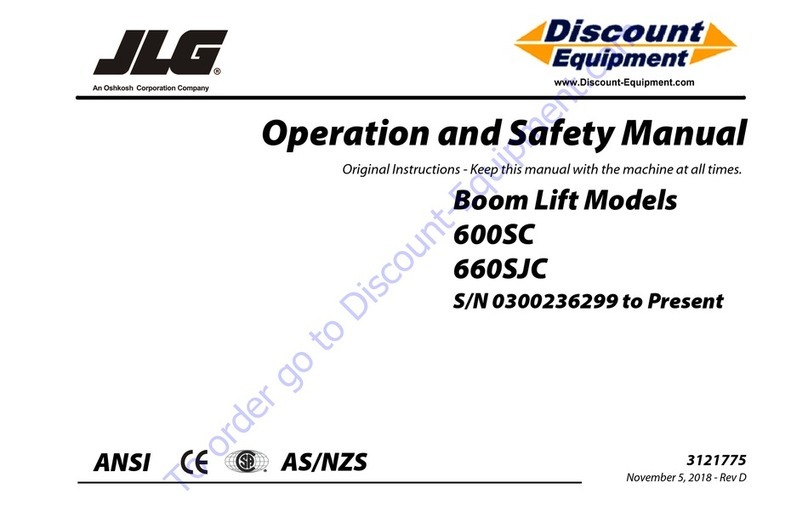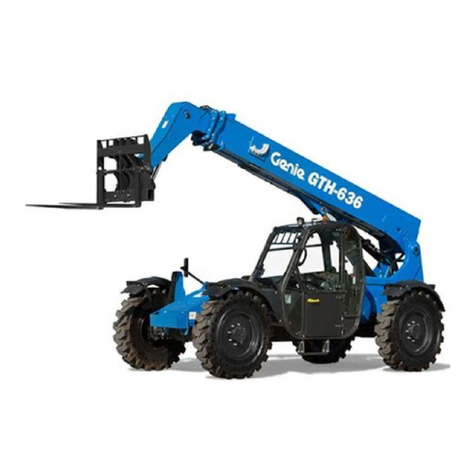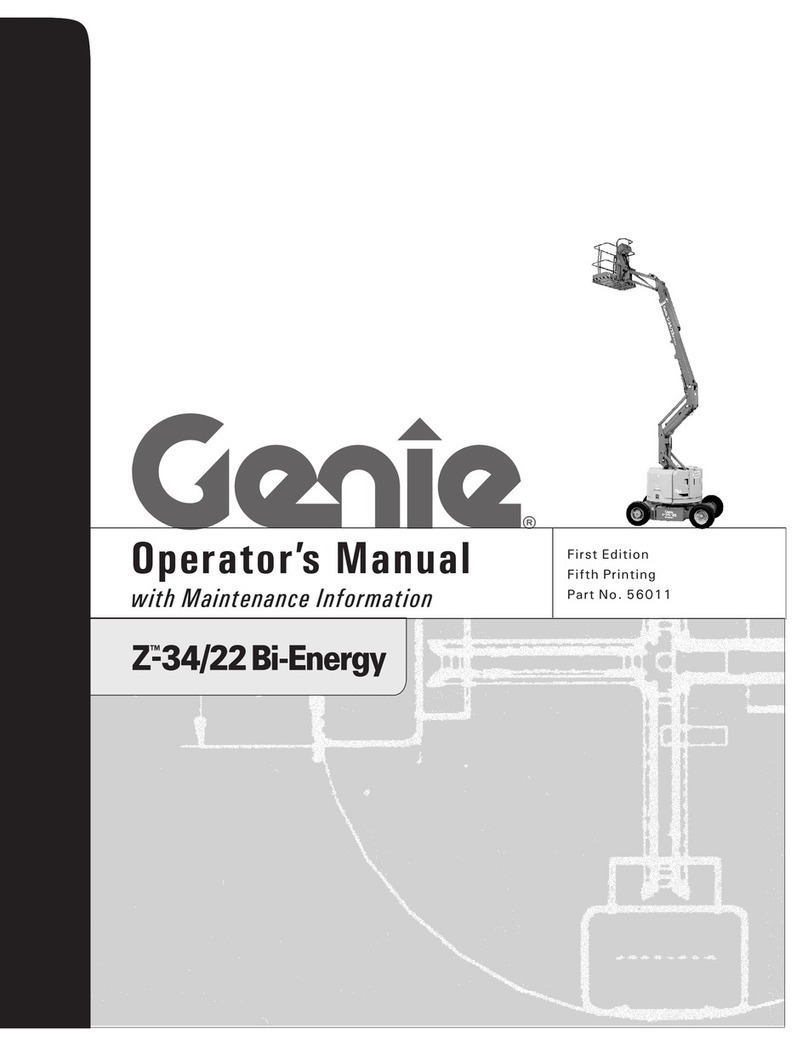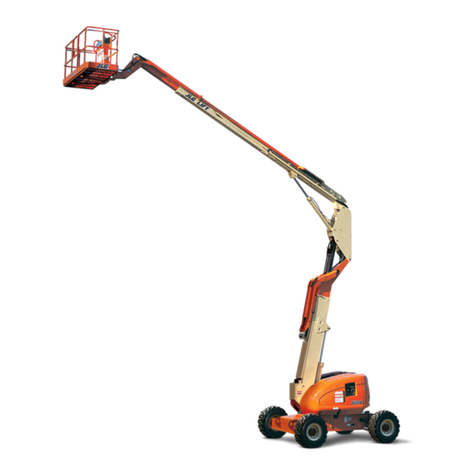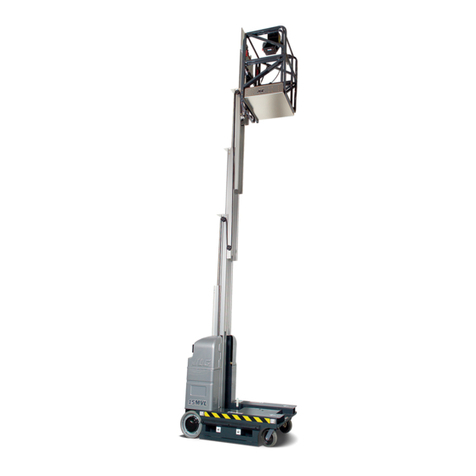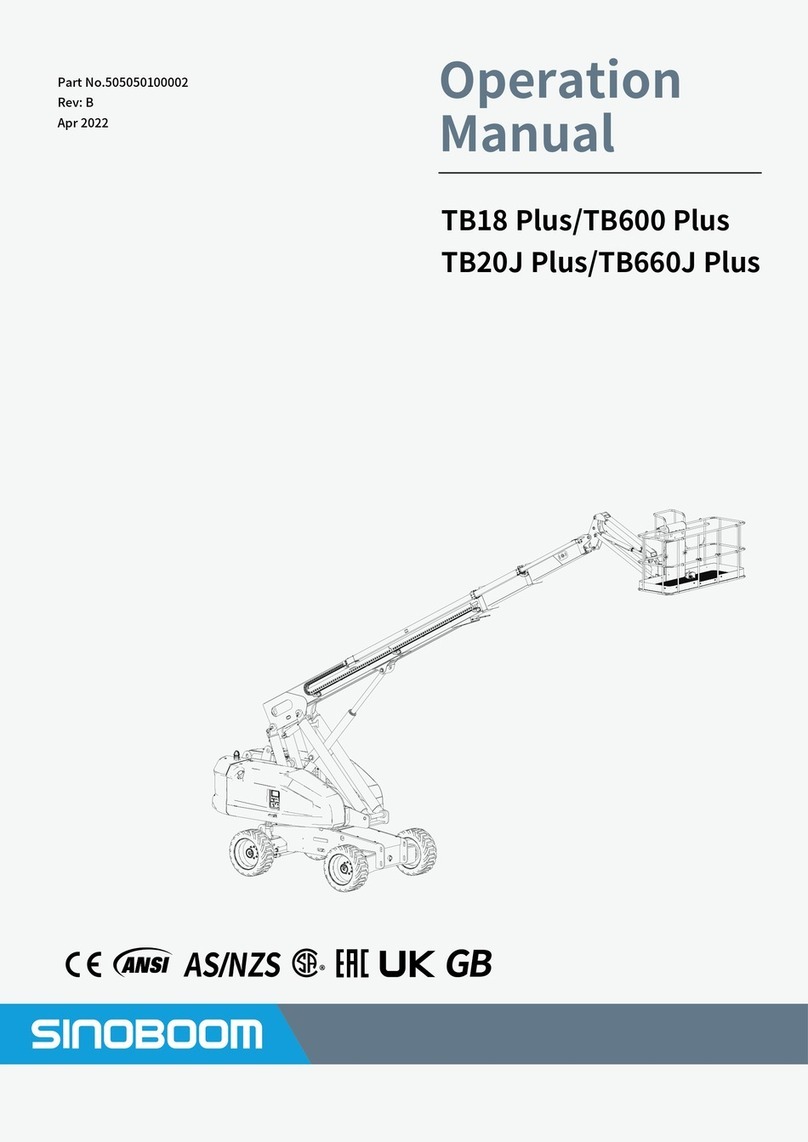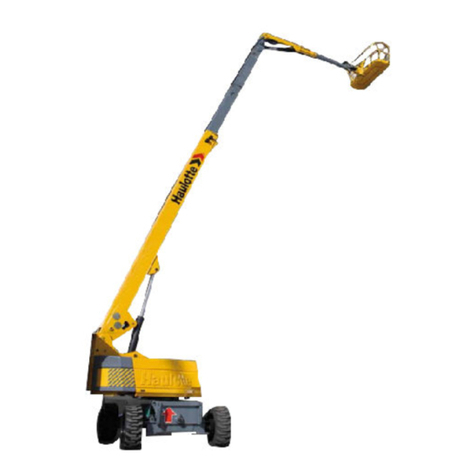
55 kg
MAX 215 KG
TOWING AND USING THE DRIVING DEVICE WITH THE LIFT IN THE TRANSPORT POSITION
PD
ALTERNATIVE POWER SOURCES
Towing the lift
• Connect the ball-coupling and cable
• Connect the power line and check the
lights
• Release the parking brake
• Lift up the jockey wheel
• Make sure that the driving device is not
connected
Driving with the driving device
• The selector switch must be set to
"chassis control center"
• Switch the driving device to the
driving position
• Release the hand brake
• Drive the lift with the drive controls
• Beware of obstacles and power lines
Choke
Engine
start / stop
XT II emergency descent system
start-up. (XTB II emergency
descent with a hand pump)
Sound signal
WORK SAFELY
Battery Mains power Petrol
engine
Diesel
engine
Controls for safety devices:
Forward
Right
Left
Please note information related to power sources:
• The aggregate does not start if the lift is connected
to the mains
• Maximum cable length in mains network 25 meters
(2,5mm2cable), fuse 10 A.
• Make sure that the batteries have time to charge
sufciently with aggregate or mains power.
• If the engine does not start, make sure that none
of the emergency stop buttons has been pressed
down.
The lift may only be moved in the transport position
• The boom lowered on the boom support
• The cover of the platform control centre closed
• Outriggers fully up
• No objects on the platform or the chassis
• Make sure that the electrical cable is disconnected or
the cable is long enough
• This quick guide does not replace the operating
instructions. Read the operating instructions before
using the lift
• The lift operator must be over 18 years old
• The use of a faulty lift is strictly forbidden
• The use of the lift is forbidden if the temperature is
below -20oCand/or the wind speed over 12,5 m/s
• The lift must not be used as a crane
• Make sure the work area is free
• The maximum permissible load must not be
exceeded
• Never add load while in the upper position
• Maximum permitted lateral force load of 400 N
XT II
XTB II
Back
Forward
Back
Left Right
LIFT SUPPORT AND USE FROM THE CHASSIS CONTROL CENTRE
OPERATING THE LIFT FROM PLATFORM CONTROL CENTRE
1234
0o
NOTICE! Support outriggers movements do not operate if the boom is not on the boom support.
NOTICE! The boom movements do not operate if the support outriggers are not rmly on the ground
Positioning and levelling:
• Make sure the ground is
even and sturdy enough. If
necessary, use additional
support plates.
• Lower the front support
outriggers
• Lower the rear support
outriggers
• Level the lift. The air
bubble in the level gauge
must be located inside the
inner ring.
• Make sure that the tyres
are properly off the ground
Before use
• Perform daily maintenance
procedures
• Check that the lift is
properly supported in a
level position
• Check the emergency stop
and the emergency descent
system
• Check the work area
Telescope in /
out
Articulated
arms down / up
Boom
up / down
Boom
rotation
Basket
rotation
Basket
levelling
Indicator lights:
The outrigger legs are supported and use
of the boom is permitted.
Overload or the load at the outreach range
limit
Indicator lights:
The load is within outreach range.
Overload or the load at the outreach
range limit
Automatic leveling (optional):
Support
outriggers down
Support
outriggers up
The control panel symbols:
While in operation
• Monitor the danger area
• Beware of high-voltage
power lines
• Do not climb onto the
platform railing
• Do not drop objects from
the platform
• If the overload indicator
lights up, retract the
telescope until the platform
is back in working range.
Max support force on the
outriggers:
160XT II/XTB II: 16800 N
(1700 kg)
180XT II/XTB II: 16800 N
(1700 kg)
210XT II/XTB II: 22800 N
(2300 kg)
Boom movements can also be used
from chassis contor center after the
outriggers are on the ground.
The battery operated
models have two operating
speeds for boom functions.
